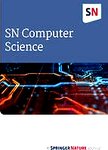版权所有:内蒙古大学图书馆 技术提供:维普资讯• 智图
内蒙古自治区呼和浩特市赛罕区大学西街235号 邮编: 010021

作者机构:School of Computer Science MIT World Peace University Kotharud Maharashtra Pune 411038 India School of Computer Science Central University of Karnataka Aland Road Karnataka Kadaganchi 585367 India Department of Computer Science and Engineering SPM Polytechnic Kumathe Maharashtra Solapur 413224 India
出 版 物:《SN Computer Science》 (SN COMPUT. SCI.)
年 卷 期:2023年第4卷第1期
页 面:1-11页
主 题:CAD Classification Deep neural network Eigenvalue Envelope K(Formula presented.) L grading system Knee X-ray images NIH-OAI Osteoarthritis Pathological features
摘 要:Osteoarthritis (OA) is a common chronic health condition of bone joints. It gradually leads severe pain and disability. Over the last 2 decades, the effect of OA is noticed more in the adult population, as well. People suffering from knee OA struggle a lot to perform daytoday activities, such as walking, climbing, and sitting, etc. The best available treatment to date tries to reduce pain but does not help to cure the chronic condition. The only possible solution is early detection and treatment of OA. There is great scope to develop an automated computer-aided diagnosis (CAD) system which will assist experts to predict the exact knee OA severity grade by analyzing X-ray images. The prediction accuracy of the CAD system is majorly dependent upon feature engineering. This means that the extracted features must truly represent the pathological features that are observed and analyzed by the experts during the diagnosis and prognosis. Hence, it is required that DNN models learn the features accurately. However, due to data scarcity and model design issues, DNN models are not able to extract better representative features. In this research attempt, we propose to combine engineered features (having high similarity with pathological features) into the features learned by the DNN model. We then perform classification on the combined feature space. The proposed system uses NIH-OAI radiographic dataset for the experimentation. The severity prediction follows K &L grades and yields 92.7% accuracy. © 2022, The Author(s), under exclusive licence to Springer Nature Singapore Pte Ltd.